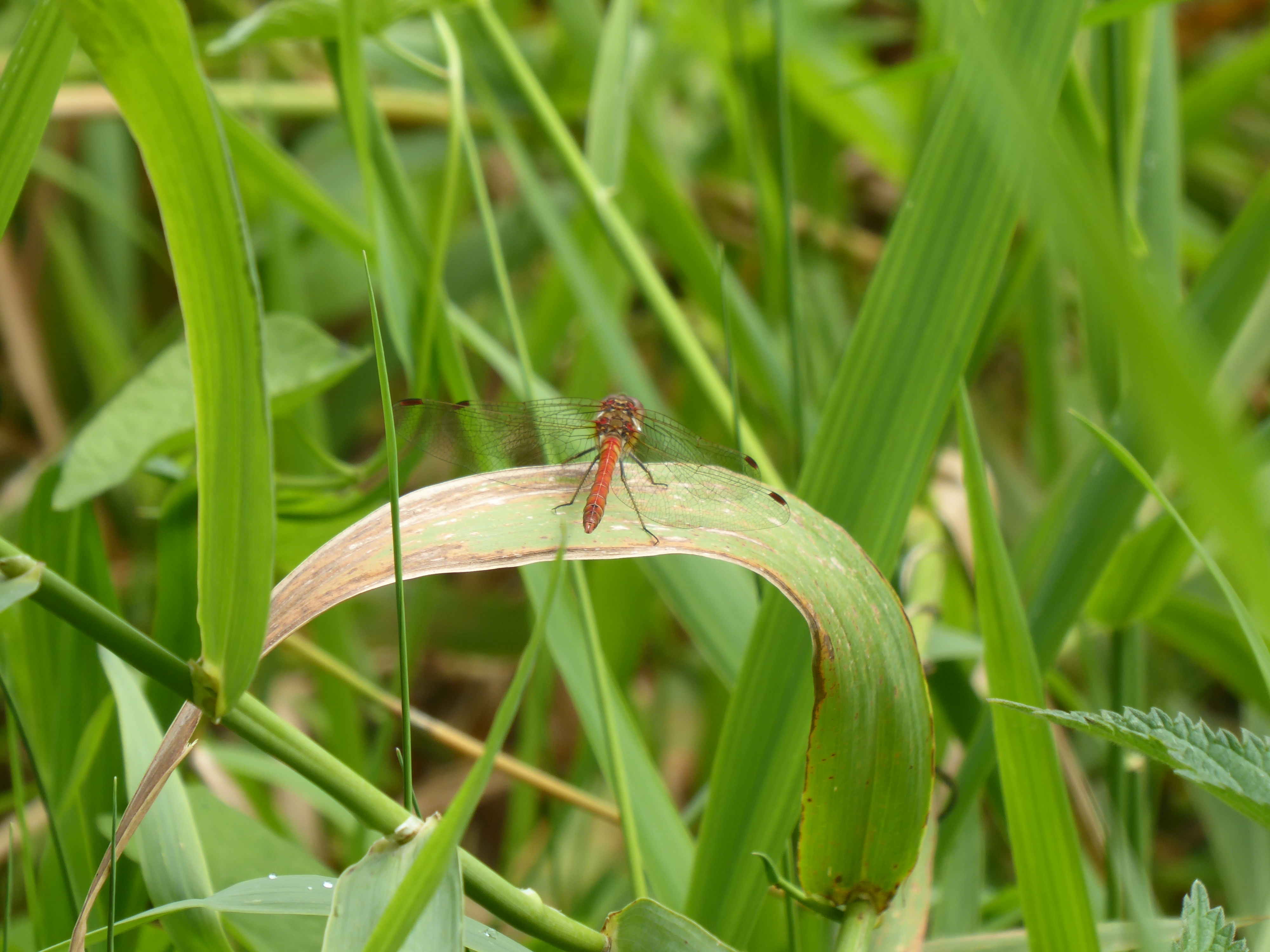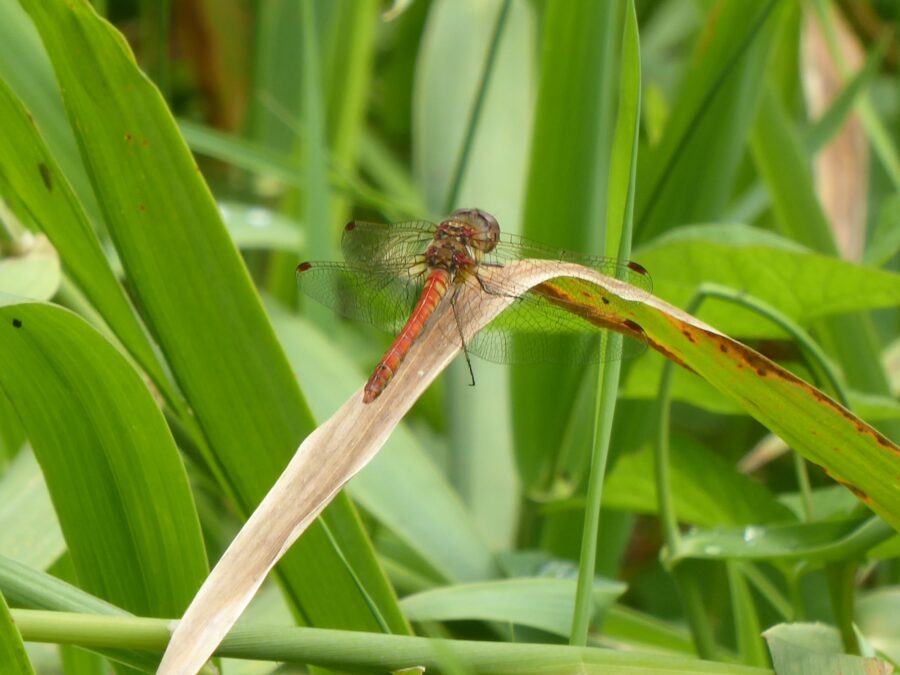This is a female Azure Damselfly. I got excited because I thought it was a Northern Damselfly. But they are an endangered species and limited to the Scottish Highlands. I stared and stared at my photo and various websites trying to identify it.
The female of the Northern Damselfly and the green forms of the Common Blue Damselfly and Azure Damselfly are black with thin pale blue stripes, pale blue legs, and pale green stripes on the thorax (upper body) and head.
Here are the reasons it could have been a Northern Damselfly:
- You can just see that there is a thin black spur-stripe from back to fore on the pale green sides of the thorax.
- The green stripes on the top of her thorax are thin.
- The markings on her pronotum, which is the bit that joins the back of the head to the body, are black outlined in pale green.
The green form of the female Common Blue Damselfly is similar but the stripes on her thorax are wider green and there is no black spur on her green sides.
However, then I found out about the Azure Damselfly, the female of which has similar markings and the shape of the pronotum has a distinctive three-lobed shape. You can just see in the picture that the pronotum, which is black and outlined in pale green, has a scalloped edge. So that confirmed it.
Also, this is Cornwall, not the Scottish Highlands.

This is a male Common Darter. There are three red Darters – the male Common Darter, the Ruddy Darter, which is not really found in the South-West, and the Red Veined Darter, which is a migrant to the South of England. This is the Common Darter because:
it is orange-red, not deep red like the other two; it may have pale leg stripes – it’s hard to see – but they are definitely not black like the Ruddy Darter; and from the picture below you can just make out that it has yellow sides to its thorax, but I couldn’t see any facial markings which would help. Still, I think I have enough clues to be sure that it is a Common Darter.

